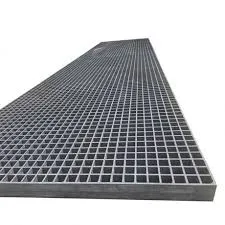
-
 Afrikaans
Afrikaans -
 Albanian
Albanian -
 Amharic
Amharic -
 Arabic
Arabic -
 Armenian
Armenian -
 Azerbaijani
Azerbaijani -
 Basque
Basque -
 Belarusian
Belarusian -
 Bengali
Bengali -
 Bosnian
Bosnian -
 Bulgarian
Bulgarian -
 Catalan
Catalan -
 Cebuano
Cebuano -
 China
China -
 China (Taiwan)
China (Taiwan) -
 Corsican
Corsican -
 Croatian
Croatian -
 Czech
Czech -
 Danish
Danish -
 Dutch
Dutch -
 English
English -
 Esperanto
Esperanto -
 Estonian
Estonian -
 Finnish
Finnish -
 French
French -
 Frisian
Frisian -
 Galician
Galician -
 Georgian
Georgian -
 German
German -
 Greek
Greek -
 Gujarati
Gujarati -
 Haitian Creole
Haitian Creole -
 hausa
hausa -
 hawaiian
hawaiian -
 Hebrew
Hebrew -
 Hindi
Hindi -
 Miao
Miao -
 Hungarian
Hungarian -
 Icelandic
Icelandic -
 igbo
igbo -
 Indonesian
Indonesian -
 irish
irish -
 Italian
Italian -
 Japanese
Japanese -
 Javanese
Javanese -
 Kannada
Kannada -
 kazakh
kazakh -
 Khmer
Khmer -
 Rwandese
Rwandese -
 Korean
Korean -
 Kurdish
Kurdish -
 Kyrgyz
Kyrgyz -
 Lao
Lao -
 Latin
Latin -
 Latvian
Latvian -
 Lithuanian
Lithuanian -
 Luxembourgish
Luxembourgish -
 Macedonian
Macedonian -
 Malgashi
Malgashi -
 Malay
Malay -
 Malayalam
Malayalam -
 Maltese
Maltese -
 Maori
Maori -
 Marathi
Marathi -
 Mongolian
Mongolian -
 Myanmar
Myanmar -
 Nepali
Nepali -
 Norwegian
Norwegian -
 Norwegian
Norwegian -
 Occitan
Occitan -
 Pashto
Pashto -
 Persian
Persian -
 Polish
Polish -
 Portuguese
Portuguese -
 Punjabi
Punjabi -
 Romanian
Romanian -
 Russian
Russian -
 Samoan
Samoan -
 Scottish Gaelic
Scottish Gaelic -
 Serbian
Serbian -
 Sesotho
Sesotho -
 Shona
Shona -
 Sindhi
Sindhi -
 Sinhala
Sinhala -
 Slovak
Slovak -
 Slovenian
Slovenian -
 Somali
Somali -
 Spanish
Spanish -
 Sundanese
Sundanese -
 Swahili
Swahili -
 Swedish
Swedish -
 Tagalog
Tagalog -
 Tajik
Tajik -
 Tamil
Tamil -
 Tatar
Tatar -
 Telugu
Telugu -
 Thai
Thai -
 Turkish
Turkish -
 Turkmen
Turkmen -
 Ukrainian
Ukrainian -
 Urdu
Urdu -
 Uighur
Uighur -
 Uzbek
Uzbek -
 Vietnamese
Vietnamese -
 Welsh
Welsh -
 Bantu
Bantu -
 Yiddish
Yiddish -
 Yoruba
Yoruba -
 Zulu
Zulu
fiberglass products for thermal and nuclear power
Fiberglass Products for Thermal and Nuclear Power
Fiberglass has emerged as a significant material in the energy sector, particularly in thermal and nuclear power applications
. Its unique properties, such as high resistance to heat, chemical stability, and lightweight characteristics, make it ideal for a range of uses in these demanding environments.One of the primary applications of fiberglass in thermal power plants is in the construction of insulation materials. Insulation plays a critical role in maintaining the efficiency of the plants by minimizing energy loss. Fiberglass insulation, characterized by its superior thermal performance, helps to ensure that heat generated during the power production process is effectively retained. This is crucial in maximizing the energy output of the plant, thereby enhancing electricity generation efficiency. Additionally, fiberglass insulation is resistant to moisture and many chemicals, making it a preferred choice for protecting pipes, tanks, and other equipment from corrosive substances and environmental factors.
In the realm of nuclear power, safety is paramount. Fiberglass materials are used extensively in the construction of containment structures due to their resilience against radiation and extreme temperatures. For example, fiberglass-reinforced plastic (FRP) is often utilized for storage tanks that hold radioactive materials, as it can withstand the stresses associated with the nuclear environment. The lightweight nature of fiberglass allows for easier transportation and installation, which can be critical in the development of new nuclear facilities or the upgrade of existing ones.
fiberglass products for thermal and nuclear power

Moreover, fiberglass products also play a role in the secondary containment systems of nuclear power plants. These systems are crucial for preventing any potential leaks of hazardous materials into the environment. The durability and strength of fiberglass composites ensure that they can provide the necessary structural integrity required for these applications, further enhancing the safety protocols within nuclear facilities.
Another exciting development in the energy sector is the use of fiberglass in wind energy. As the world moves towards more sustainable energy solutions, fiberglass has become a popular material in the construction of wind turbine blades. The lightweight and strong characteristics of fiberglass enable the production of longer blades, which can capture more wind and increase energy output. This application demonstrates the versatility of fiberglass, extending its relevance beyond just thermal and nuclear power.
In conclusion, fiberglass products continue to play an essential role in both thermal and nuclear power sectors. Their unique properties facilitate improved efficiency, safety, and sustainability in energy generation. As industries evolve and seek innovative solutions to meet global energy demands, the use of fiberglass is likely to expand, solidifying its place as a critical material in future energy technologies. The continued research and development in fiberglass applications will further enhance the capabilities of thermal and nuclear power, paving the way for a more efficient and safer energy landscape.









